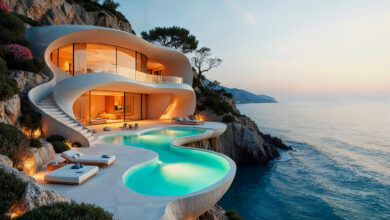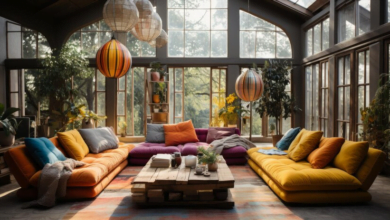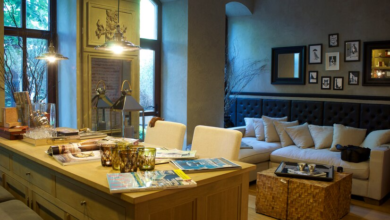17th Century French Interior Design – A Historical Journey
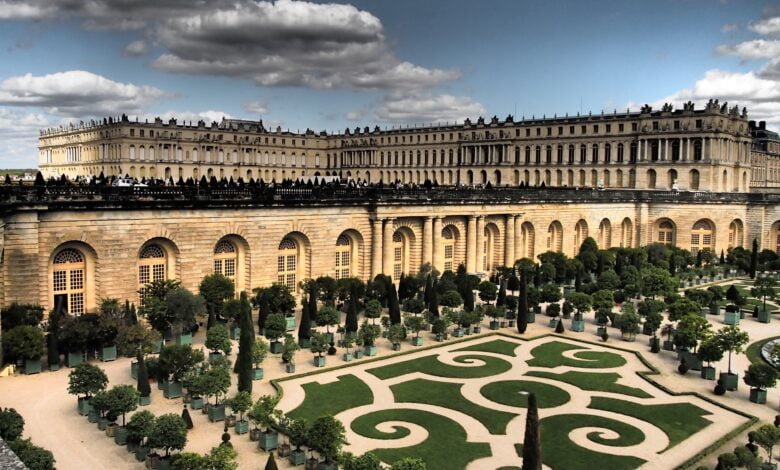
Let’s revisit the era of maximalism, 17th century French interior design takes you on a journey through opulence and aristocratic taste. In this blog post, we’ll explore the rich history and exquisite craftsmanship that defined this iconic era, discovering the key elements, influential figures, and enduring legacy of French design from the 1600s. So, grab a seat, pour yourself a cup of tea, and prepare to read on.
The Louis XIII Style: Foundations of French Elegance
In the early 17th century, under the reign of Louis XIII, French interior design began to blossom into its own distinctive style after it emerged during Henry IV’s patronage of craftsmen. During this period, designers fused Spanish, Flemish, and Italian influences in furniture and design. Furniture of this period featured massive, solid construction in dark colours and veneer, turned wood. They were architectural in form with geometric carvings.
Craftsmen built massive tall cupboards, dressers, and tables with various legs, while they added arms to chairs and upholstered stools. They used leather and fine fabrics like velvet for upholstery. Materials expanded from typical woods like oak and walnut to include ivory, marble, and metals like pewter and copper. Ebony was another favorite material choice for construction and ornate woodwork in French interiors.
Moreover, turning was widely used for legs, stretchers, and richly turned shapes. Marquetry consisted of metal, wood, and tortoise-shell while ornamentation leaned towards thick, heavy motifs, convex curves, twisted columns, and designs like fruits, flowers, leaves, shells, and lion and ram heads.
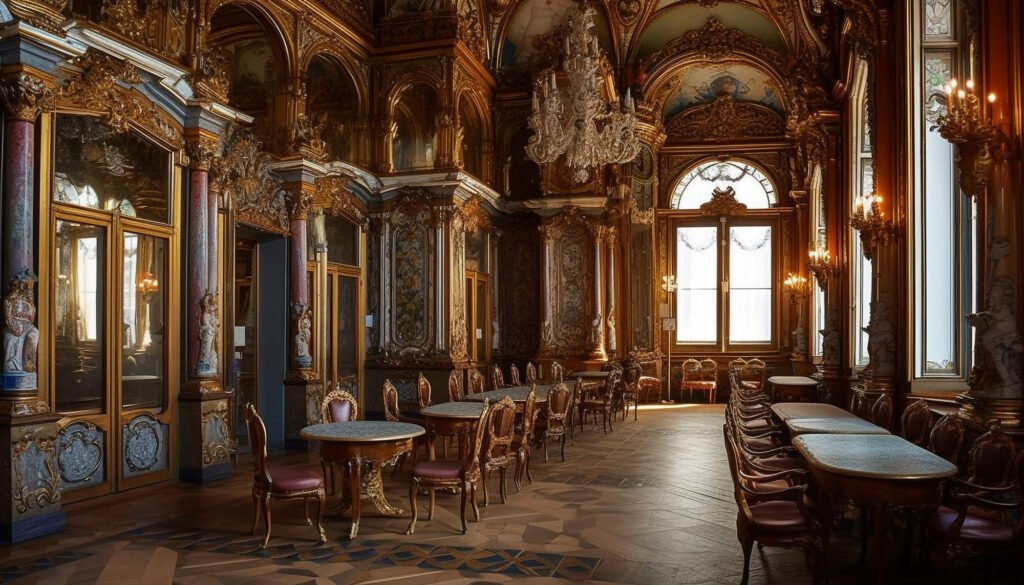
Louis XIV: The Age of Opulence
Transitioning into the golden age of French design under the Sun King, Louis XIV, we witness a dramatic shift towards magnificence and extravagance. The 17th century French interior design reached the zenith of opulence during this era, with an emphasis on lavish ornamentation and theatricality.
Elaborately decorated suites of spacious rooms served as luxurious settings for the King and his courtiers. Typically, these suites comprised a vestibule, antechamber, dining room, salon, state bedroom, study, and gallery, offering a grand arrangement for various activities. Staircases, designed to be stately and expansive, provided a majestic entrance to the main rooms. Decorative schemes integrated fittings, hangings, and furniture that contribute to the overall ambiance of each room.
The French Baroque interior design style, renowned for its grandeur, made its way into magnificent palaces across Europe. The mid-17th-century masterpiece, the Palace of Versailles was designed to showcase France’s prestige and the power of Louis XIV. Versailles influenced interior decoration and furnishings throughout Europe.
In addition to the painted ceilings of the Galerie des Glaces (Hall of Mirrors), Charles Le Brun’s designs and a myriad of artworks further enhanced the Palace of Versailles décor and its royalty. Besides the Galerie des Glaces at Versailles, the Galerie d’Apollon at the Louvre is an example of splendor in decoration. The overwhelming grandeur of these spaces, enriched with marble, plasterwork, and painted ceilings, remains unparalleled.
The Legacy of Louis XV: Rococo Revival
In the latter half, 17th century French interior design witnessed a stylistic transformation with the emergence of the Rococo style under Louis XV. Characterized by playful elegance and whimsical motifs, this period celebrated asymmetry, organic forms, and delicate embellishments.
Louis XV-style furniture featured chairs with curved legs and floral decorations. Rare wood like tulip, lemon tree, and violet were used along with richly veined marble. Motifs inspired by nature including animals and exotic landscapes beautify surfaces. Pastel hues, intricate carvings, and rocaille ornamentation in all sorts of metal, inlaid work in woods, mother-of-pearl, and ivory, adorned the salon interiors and boudoirs of the elite, creating spaces that exude sophistication. French Rococo Artists François Boucher and Jean-Honore Fragonard are some names that popularized this design style making it a traditional design trend.
Rediscovering 17th century French Interior Design: Influence for Modern Design
The legacy of 17th century French interior design continues to resonate in the modern-day, inspiring designers and homeowners with its timeless elegance and detailed craftsmanship. From the symmetrical layouts of Louis XIII to the extravagant ornamentation of Louis XIV and the whimsical charm of Rococo, understanding the essence of French design from the 1600s offers invaluable insights into the evolution of style and thoughtful design; a means of fusing the old with the new.
Final Words
Now that you’ve read through the pages of history, let’s accept that there’s something truly magical about stepping back in time and immersing yourself in the elegance of 17th century French interior design. Whether you’re drawn to the grandeur of Louis XIV’s Versailles or the playful design of Rococo salons, you can pick your favorite points from this treasure of beauty and inspiration.
Source: Britannica
